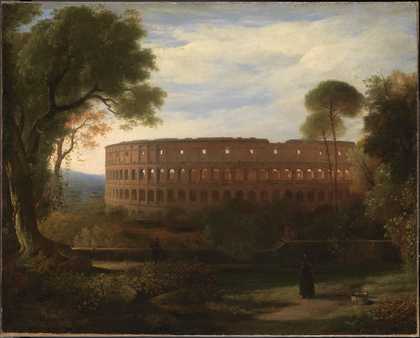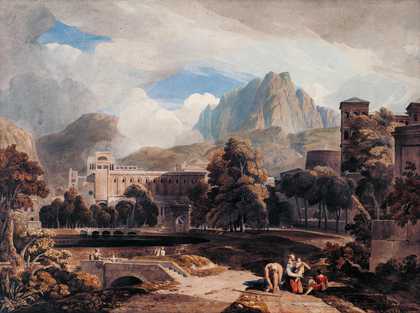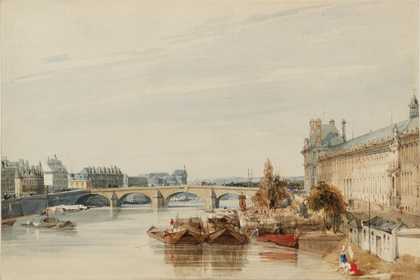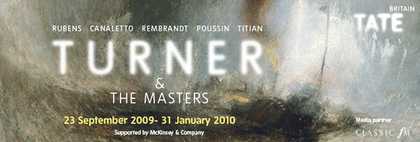
Sir Charles Lock Eastlake
The Colosseum from the Esquiline (1822)
Tate
Some of the great European painters of the nineteenth century have been united for a major exhibition at Tate Britain. John Constable, J.M.W. Turner, Camille Corot, Théodore Géricault and Eugène Delacroix are among those artists who feature in the exhibition, which investigates artistic exchange between France and Britain during the period of High Romanticism, from approximately 1816 to 1837, when Queen Victoria came to the throne. This is the first time that an exhibition on this subject has ever been attempted.

John Varley
Suburbs of an Ancient City (1808)
Tate
Constable to Delacroix places a particularly strong emphasis on the influence the British artists had on their French counterparts. Many French artists during this time were fascinated with English and Scottish culture, and this played a crucial role in the development of modern French art. The exhibition includes over one hundred oil paintings and watercolours, and covers many genres including landscape, portraits and sporting art.
Affinities between the British and French schools in matters of theory, subject and technique are explored, and the exhibition focuses on the interrelations between a range of key artists, those above as well as Richard Parkes Bonington, Thomas Lawrence, David Wilkie, Paul Delaroche, Paul Huet, Dominique Ingres, Eugène Isabey, Horace Vernet and the French landscapists who comprised the School of 1830.
The exhibition analyses the key cultural events which influenced artists from both nations, such as the publication in Edinburgh of Sir Walter Scott's historical novel, Ivanhoe, which had an immediate and profound impact on French literature and painting. It includes a reconstruction of the highly successful 1820 exhibition of Géricault's painting Raft of the Medusa – one of the most dramatic and controversial paintings in art history – in the Egyptian Hall, Piccadilly, London, and a magnificent full scale copy of the Raft (approximately seven metres by five metres), executed by French Academicians in 1859.
While the display of the Raft recreates for visitors the experience of a visit to a small, private exhibition involving one major work, there is also a recreation of a large public exhibition of the 1820s. This 'grand gallery' of exhibition pictures comprises works that were shown at the Salon in Paris and the Royal Academy and British Institution in London, as well as influential examples of contemporary painting that were accessible to artists in distinguished private picture galleries like those of the Marquess of Stafford in England and the Duc d'Orléans in France. More detailed examinations of specific genres follow in a group of satellite galleries radiating from this central room.

Thomas Shotter Boys
The Seine and Palace of the Tuileries (c.1830–5)
Tate
Constable to Delacroix features loans from public and private collections around the world, including the National Gallery, London, the Musée du Louvre, Paris and the National Gallery of Art, Washington. The lead curator is Patrick Noon, the Patrick and Aimee Butler Curator of Paintings at the Minneapolis Institute of Arts who has worked with co-curators from Tate, Christine Riding and David Brown. The exhibition tours to the Minneapolis Institute of Arts from 8 June to 7 September 2003, and then to the Metropolitan Museum, New York, from 7 October 2003 to 4 January 2004.

